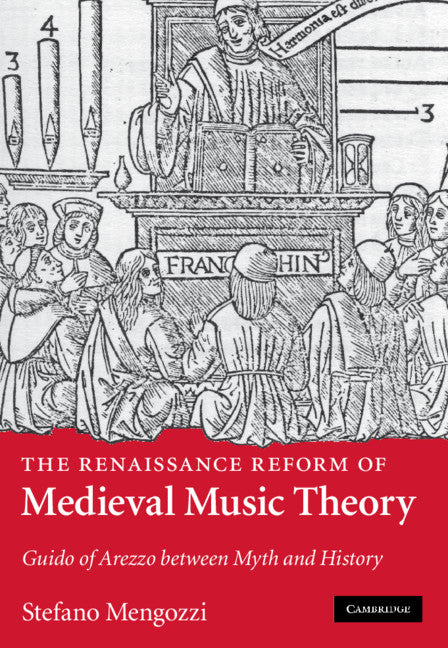Freshly Printed - allow 8 days lead
Couldn't load pickup availability
The Renaissance Reform of Medieval Music Theory
Guido of Arezzo between Myth and History
A detailed study of the sight-singing method introduced by the 11th-century monk Guido of Arezzo, in its intellectual context.
Stefano Mengozzi (Author)
9780521884150, Cambridge University Press
Hardback, published 11 February 2010
304 pages
25.4 x 18.3 x 1.7 cm, 0.76 kg
'It is an ambitious, thought-provoking study of an important topic within a milieu that was full of controversy, transition, and renegotiation, brought to the fore here with much insight.' Nancy van Deusen, Renaissance Reform of Medieval Music Theory
Modern scholars have often portrayed the method of hexachordal solmization - the sight-singing method introduced by the 11th-century monk Guido of Arezzo - as the diatonic foundation of early music. Stefano Mengozzi challenges this view by examining a representative sample of the primary sources of solmization theory from Guido of Arezzo to Gioseffo Zarlino. These texts show that six-syllable solmization was only an option for sight-singing that never imposed its operational 'sixth-ness' onto the diatonic system, already grounded on the seven pitch letters. It was primarily through the agency of several 'classicizing' theorists of the humanist era that the six syllables came to be mistakenly conceived as a fundamental diatonic structure - a 'hexachord' built from the 'tetrachord' of the Ancient Greeks. The book will be of particular interest to readers seeking to deepen their knowledge of medieval and Renaissance musical thought with an eye to major intellectual trends of the time.
Introduction: Guido's hexachord: old facts and new questions
Part I. Guidonian Solmization in Music Theory and Practice: 1. Guido's musical syllables: conflicting views from modern historiography
2. Inside the gamut: Guido of Arezzo and Hermannus Contractus on the major sixth
3. Hands off! Singing without syllables in the Middle Ages
4. The making of a system: medieval music semiotics in transition
Interlude: All hexachords are 'soft'
Part II. Reforming the Music Curriculum in the Age of Humanism: 5. Back to the monochord: church reform and music theory in the 15th century
6. Normalizing the humanist: Johannes Gallicus as a 'Follower of Guido'
7. Gafori's hand: forging a new Guido for a new humanist culture
8. Hexachordal theory and deductive method in Gioseffo Zarlino's Dimostrationi harmoniche (1571)
Epilogue: Discarding the Guidonian image of early music
Bibliography.
Subject Areas: Techniques of music / music tutorials [AVS], Medieval & Renaissance music [c 1000 to c 1600 AVGC2], Theory of music & musicology [AVA], Music [AV]


